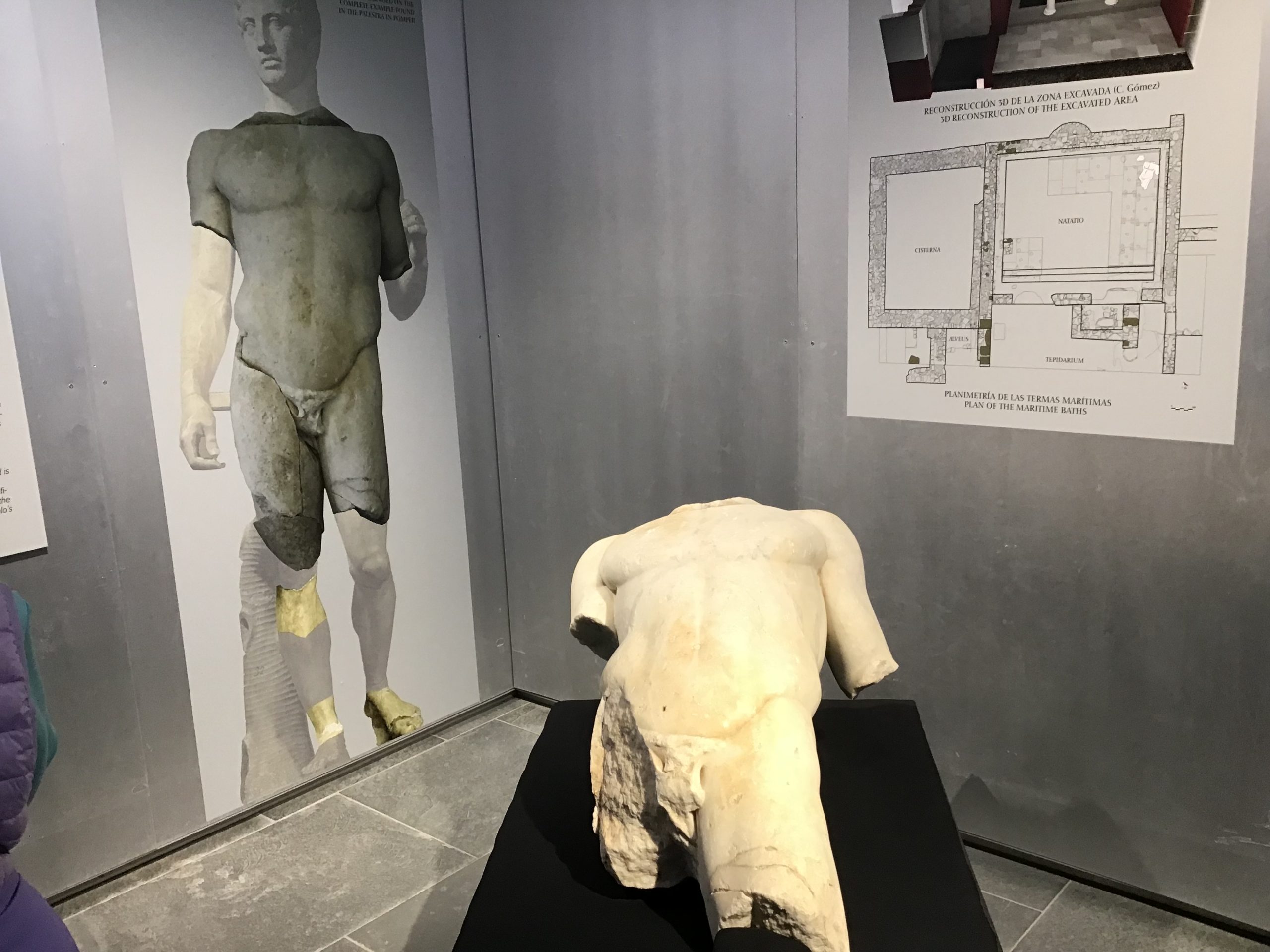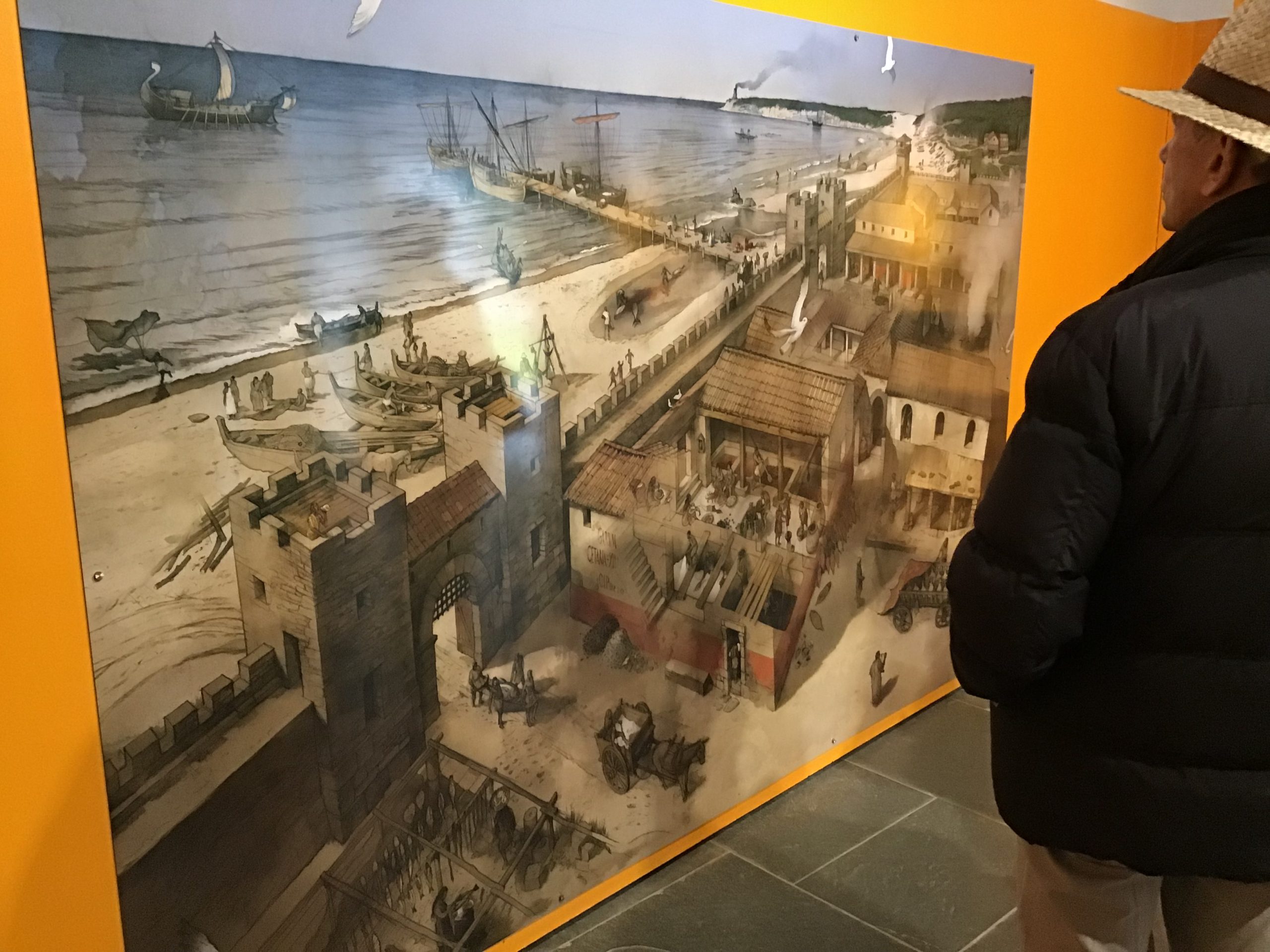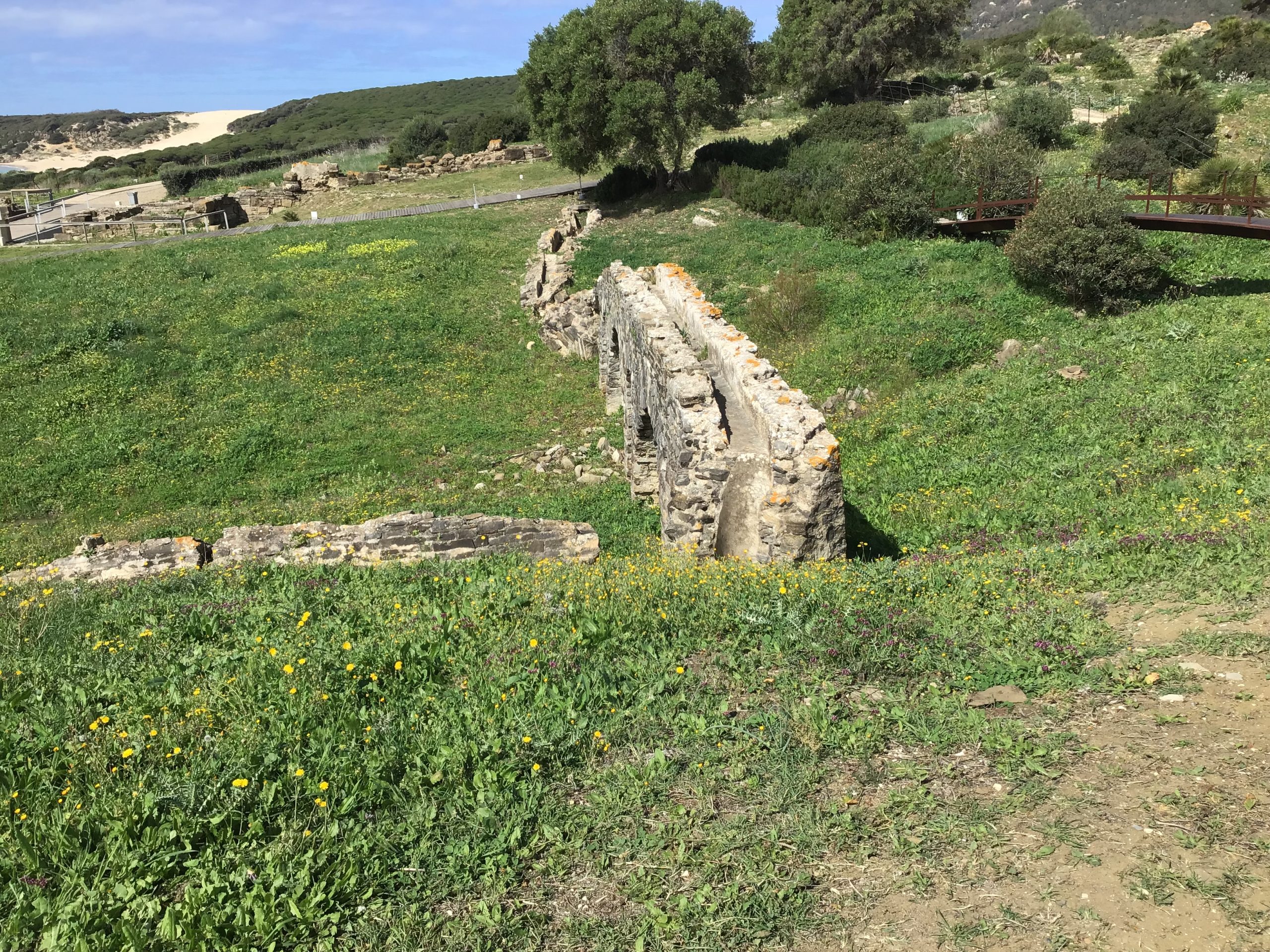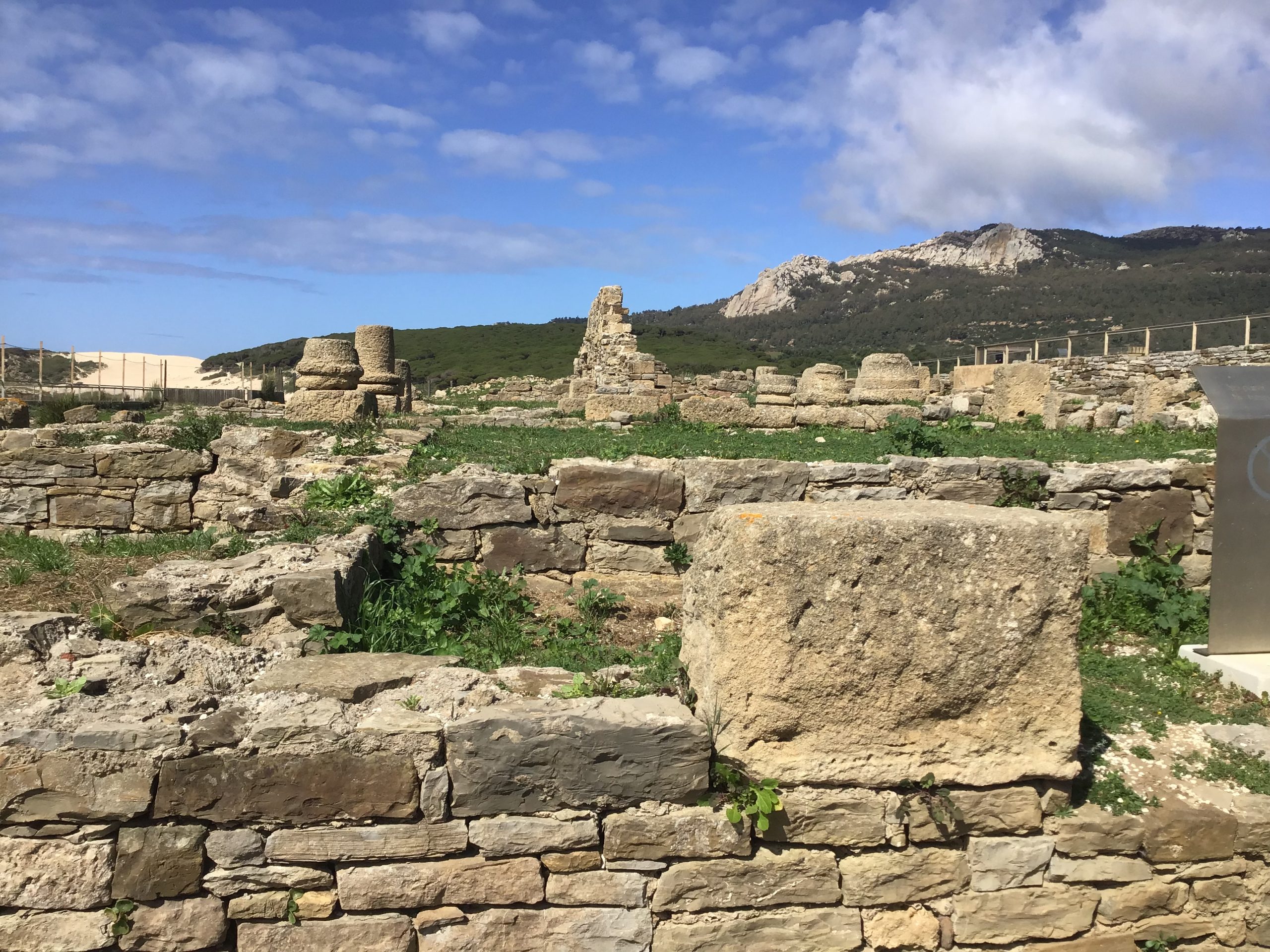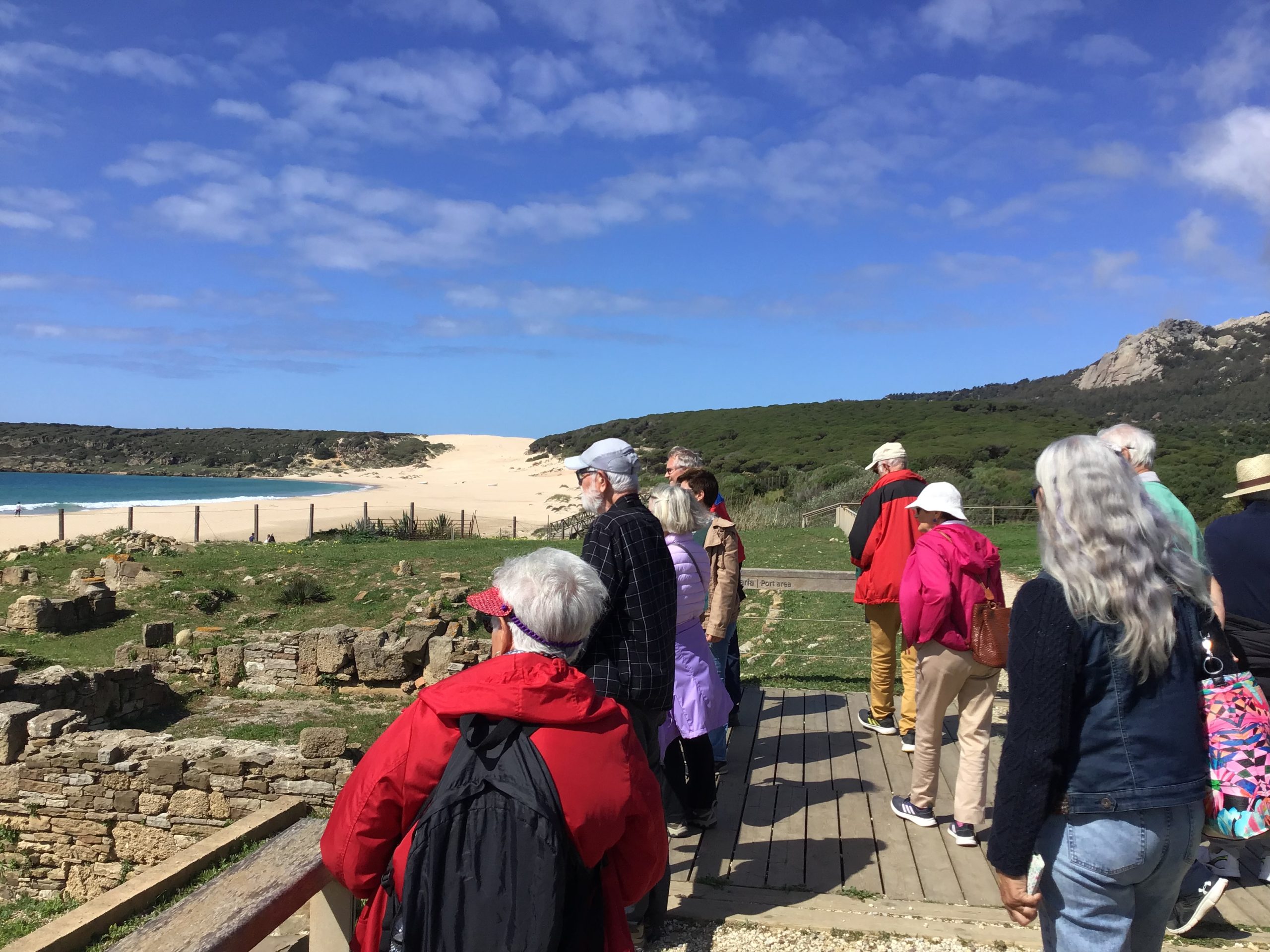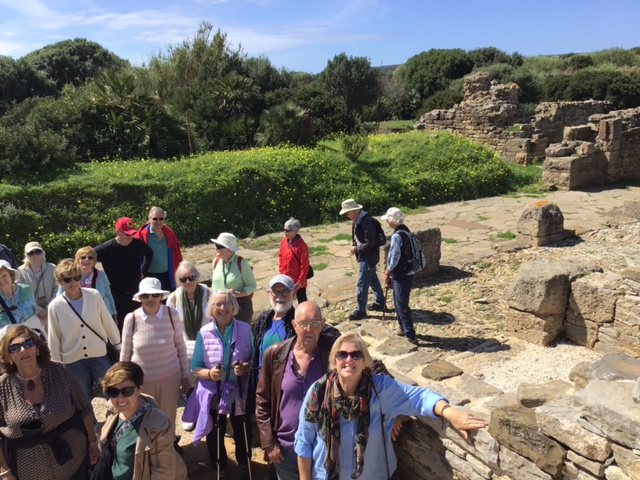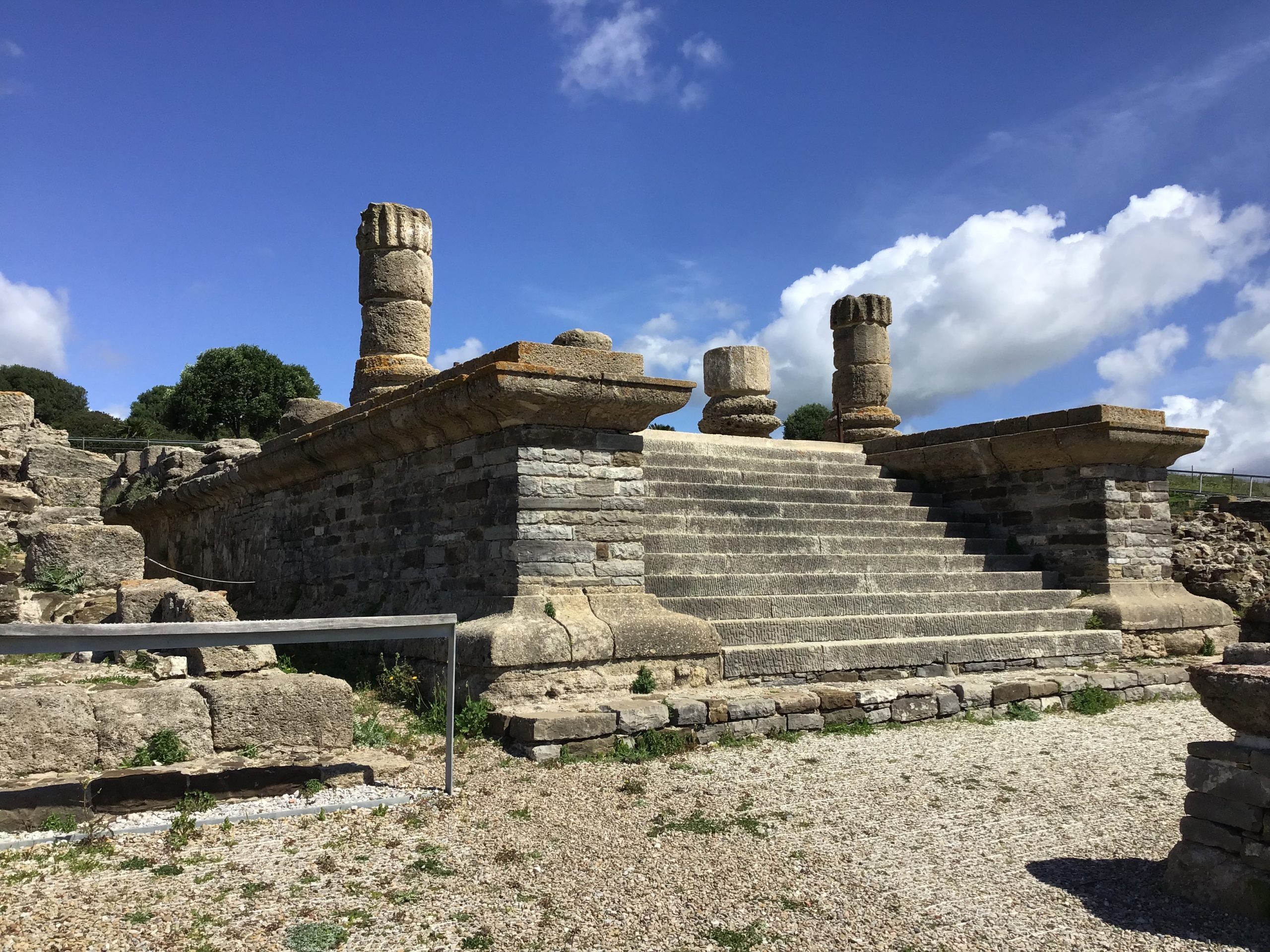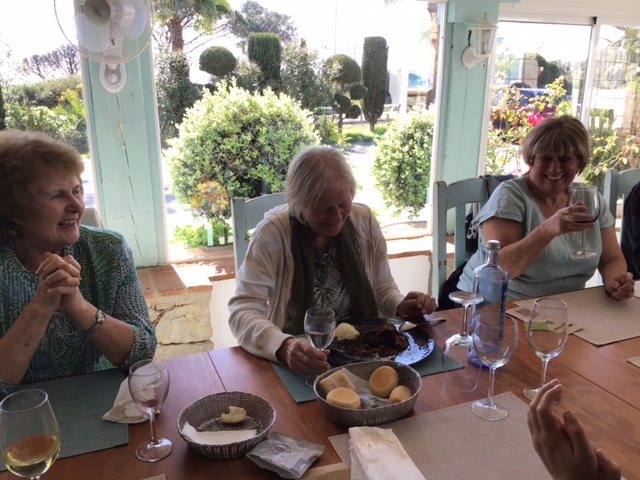On Friday 17th March, 34 of us had an early start (07.00), including our Guide, the Roman Specialist from Granada University, Elena Sanchez, on our way to the Roman Site of Baelo Claudia, situated past the Straits of Gibraltar, in the province of Cadiz.
Everyone was very punctual and we stopped for breakfast at 08.45. Suitably refreshed, we continued our journey through some lovely countryside and some more industrial areas. However, nearing our destination, the terrain changed. It became very sandy and the types of pine trees changed from tall and spikey to shorter and fluffy.
We arrived at Baelo Claudia on time and disembarked, all absolutely wowed by the sight of the long, golden sandy beach. The visitors centre has made the most of the view with large panoramic miradors and on the way down to the Museum is a huge plate glass window. Many of us felt we could sit there and just gaze. The Museum has some very interesting artefacts and also a large painting, which depicts the City of Baelo Claudia as it may have looked.
We then went outside and commenced our guided visit of the remains. It makes such a difference having a guide along. We saw the only remaining aquaduct and could see where the effect of the earthquake had changed the direction of water flow.
Then Elena explained the layout of the city: the main street, side streets, shops and then we looked in more detail at the Garum Pits (fish paste), some of which would have been owned by commercial enterprises and some in other areas by smaller owners. This was a good source of revenue. We also saw the huge paving slabs which still form the main street – amazing to think of the numbers of feet which had trodden that road. Also, the all important bath area with the pools for different temperatures, as we still have today in Spa’s. And also, the forerunner of underfloor heating whereby arches were built to enable hot air to circulate through to different rooms. Then the “square square” as Elena calls it, where there is now a statue of Claudius, after whom the site is named and leading on from that is the Forum.
On a higher level, is the theatre which is semi-circular with rows of seating, available depending upon your status in society – women were generally in “the Gods” at the very top, with poor visibility ! We also learned that men were named but women were usually named titles like “junior” or so and so 2nd or 3rd etc. Without doubt, the location for this Roman City was well chosen. After an interesting but tiring couple of hours, we adjourned to the lovely little Hotel, El Torre which had prepared a delicious lunch for us. The staff were friendly and efficient and the food was plentiful & excellent, as was the wine and beer.
We set off for Nerja and made a photo stop overlooking the Straits of Gibraltar – wonderous views across to Morocco. We then continued our return journey and all agreed that the long day had been very well worth it !
Christina Sinclair
Co-ordinator
Nerja History Group
email:nerjahistorygroup@yahoo.com
www.nerjahistorygroup.com


